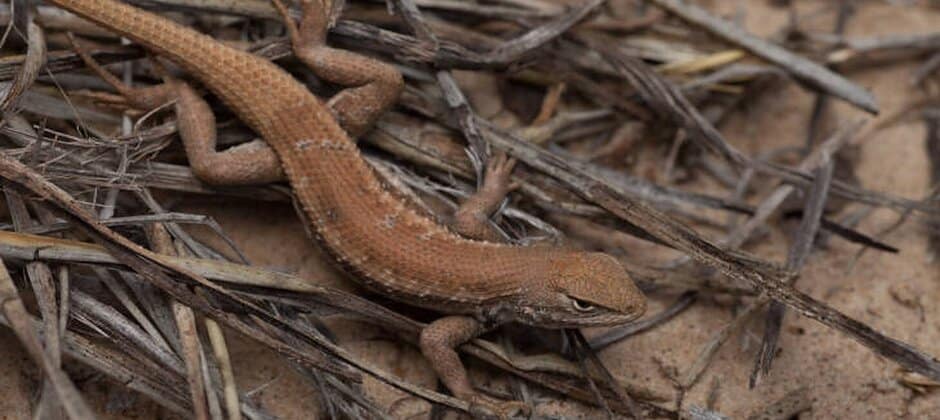Share this article
USFWS considers allowing development in rare lizard habitat
The U.S. Fish and Wildlife Service may allow oil and gas development as well as other activities in areas that can harm or kill rare lizards native to the area.
The Service released a draft Candidate Conservation Agreement With Assurances (CCAA) in conjunction with an application from landowners in Texas’ Permian Basin for a permit that would allow them to engage in oil and gas development, sand mining, renewable energy development and other activities that could harm or kill dunes sagebrush lizards (Sceloporus arenicolus).
The agency also released a draft environmental impact assessment, analyzing the proposed CCAA, which gives private property owners and industries the opportunity to adopt proactive, voluntary conservation measures in exchange for regulatory leeway if an Endangered Species Act listing eventually occurs.
The permit currently being considered would allow development on 54 square miles in West Texas counties, and would remain in effect for up to 23 years or until surrendered by the permittees
The 3-inch-long dunes sagebrush lizard is found only in the resource-rich Permian Basin in West Texas and southeastern New Mexico. The USFWS has indicated that the lizard faces potential threats from oil and gas development and operations, sand mining and climate change. In July, the USFWS determined that listing the dunes sagebrush lizard may be warranted, following a suit by wildlife advocacy groups spurred by the agency’s inaction on a petition to list the species. The agency is now halfway through a year-long status review that will guide the next steps in the listing process.
The proposed CCAA provides guidance on avoidance, minimization and mitigation for all industry sectors conducting activities in dunes sagebrush lizard habitat. Any new surface disturbances will trigger payment of habitat conservation fees and will require the implementation of conservation measures to minimize the impacts of the disturbance. The public comment period on the proposal ended Dec. 21.
In 2018, Defenders of Wildlife and the Center for Biological Diversity petitioned the USFWS to list the species as threatened or endangered. The agency did not act on the petition, prompting the environmental groups to sue. The parties settled that lawsuit, with the USFWS agreeing to issue a 90-day finding by June 2020. In July, the USFWS determined that listing the dunes sagebrush lizard may be warranted. The agency is now halfway through a year-long status review.
The dunes sagebrush lizard previously proposed for listing in 2010, although the agency then decided against listing after the state of Texas and the USFWS prepared a conservation plan. That plan was withdrawn in 2018.
Another legal challenge in 2014 was settled in favor of the USFWS, who the judge said reasonable concluded that listing was not warranted due to existing conservation agreements and ongoing efforts to mitigate habitat loss and reclaim habitat. Read TWS’ Standing Position on Threatened and Endangered Species in the U.S. and Position Statement on the U.S. Endangered Species Act.
Header Image: The U.S. Fish and Wildlife Service is currently considering a permit to allow landowners to develop in 54 acres of the rare dunes sagebrush lizard’s habitat in Texas and New Mexico. Credit: Ryan Haggerty/USFWS








